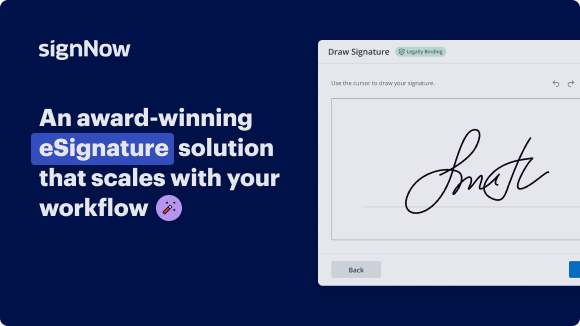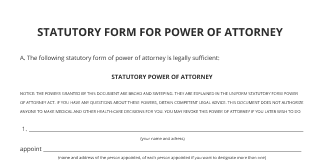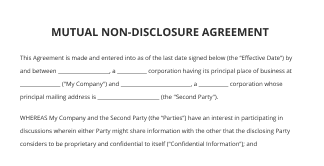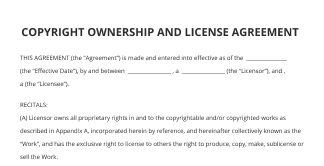Write Up Policy Template with airSlate SignNow for Seamless eSigning
Move your business forward with the airSlate SignNow eSignature solution
Add your legally binding signature
Integrate via API
Send conditional documents
Share documents via an invite link
Save time with reusable templates
Improve team collaboration
See airSlate SignNow eSignatures in action
Understanding the Importance of a Policy Template
A policy template serves as a foundational document that outlines the guidelines and procedures within an organization. It ensures consistency in operations and provides clarity for employees regarding expectations and responsibilities. By utilizing a structured policy template, businesses can effectively communicate their values and operational standards, which is vital for compliance and governance.
Key Components of a Policy Template
When creating a policy template, certain elements are essential to include for clarity and effectiveness:
- Title: Clearly state the name of the policy.
- Purpose: Explain the reason for the policy and its importance.
- Scope: Define who the policy applies to within the organization.
- Policy Statements: Outline the specific rules and guidelines.
- Responsibilities: Identify who is responsible for enforcing the policy.
- Procedures: Describe the steps for compliance and enforcement.
- Review and Approval: Include information on how often the policy will be reviewed and who must approve it.
Steps to Write Up a Policy Template
Creating a policy template involves several steps to ensure it meets organizational needs:
- Identify the Need: Determine the specific area that requires a policy.
- Research: Gather information on best practices and legal requirements related to the policy.
- Draft the Policy: Use the key components to write a clear and concise draft.
- Review: Have key stakeholders review the draft for feedback and necessary adjustments.
- Finalize: Make any final edits and prepare the document for distribution.
- Implement: Share the policy with all relevant parties and provide training if necessary.
- Monitor and Revise: Regularly review the policy to ensure it remains relevant and effective.
Utilizing airSlate SignNow for Policy Management
With airSlate SignNow, businesses can streamline the process of creating, signing, and managing policy documents. Users can easily prepare a policy template for eSigning, ensuring that all stakeholders can review and approve the document efficiently. The platform allows for secure sharing and storage of completed policies, making it simple to maintain compliance and accessibility.
Common Use Cases for Policy Templates
Policy templates can be applied in various scenarios within an organization:
- Employee Handbooks: Outline company policies and procedures for new hires.
- Safety Guidelines: Establish safety protocols and procedures in the workplace.
- Remote Work Policies: Define expectations and guidelines for employees working from home.
- Data Protection Policies: Ensure compliance with regulations regarding data privacy and security.
Best Practices for Policy Template Creation
To enhance the effectiveness of a policy template, consider the following best practices:
- Be Clear and Concise: Use straightforward language to avoid ambiguity.
- Involve Stakeholders: Engage employees in the drafting process to gain insights and foster acceptance.
- Regularly Update: Review and revise policies periodically to reflect changes in laws or organizational structure.
- Provide Training: Ensure employees understand the policy and its implications through training sessions.
airSlate SignNow solutions for better efficiency
Our user reviews speak for themselves






Why choose airSlate SignNow
-
Free 7-day trial. Choose the plan you need and try it risk-free.
-
Honest pricing for full-featured plans. airSlate SignNow offers subscription plans with no overages or hidden fees at renewal.
-
Enterprise-grade security. airSlate SignNow helps you comply with global security standards.

How to create a policy template using airSlate SignNow
Drafting a policy document can be a challenging endeavor, but with airSlate SignNow, you can simplify the experience. This platform provides an intuitive interface that enables you to effectively handle document signing and templates, making it an excellent option for enterprises aiming to improve their workflow.
Steps to construct a policy template with airSlate SignNow
- Launch your web browser and go to the airSlate SignNow website.
- Sign up for a free trial account or log in if you already possess one.
- Choose the document you want to sign or send for signatures and upload it.
- If you intend to reuse this document, transform it into a reusable template.
- Access your uploaded document and make necessary modifications, such as incorporating fillable fields or adding specific details.
- Sign the document and include signature fields for the recipients.
- Click 'Continue' to set up and dispatch an eSignature invitation.
airSlate SignNow aims to empower enterprises by offering a simple and economical solution for document management. With its comprehensive feature set, you can anticipate signNow returns, particularly suited for small to mid-sized enterprises. The platform also features clear pricing without hidden charges and outstanding 24/7 support for all paid plans.
Begin enhancing your document processes today with airSlate SignNow. Register now and enjoy the advantages firsthand!
How it works
airSlate SignNow features that users love
Get legally-binding signatures now!
FAQs
-
What is the format for a write-up?
The write-up should be clear, concise, and objective. It should include a brief summary of the issue, the consequences, and any steps the employee needs to take to improve their performance or behavior. It's important to avoid using personal opinions or emotions when writing the document. -
What are the 7 steps of creating a policy?
Using a scenario, it walks learners through each of the seven stages of this process: (1) Issue identification and definition; (2) Data, research and analysis for policymaking; (3) Policy formulation; (4) Consultation; (5) Policy adoption; (6) Policy implementation; (7) Policy monitoring and evaluation. -
How to write-up a policy?
Guidelines For Writing the Policy Step 1: Perform internal research. ... Step 2: Identify the policies you want to create. ... Step 3: Include the key elements in the policy. ... Step 4: Create content for each element of the policy. ... Step 5: Add more information to clarify the policy for stakeholders. -
What is a simple example of a policy?
A company or organization's policy on a particular topic. For example, the equal opportunity policy of a company shows that the company aims to treat all its staff equally. -
How to write a brief policy?
Content Do not exceed 1,500 words or two pages in length. ... Include only essential information. ... Clearly identify the salient points that support your goal. Draft a new purpose-driven policy brief instead of summarizing or cutting down an existing report. Use plain language. -
What is an example of a policy?
Some examples include a company's social media policy, a school district's bullying policy, an organization's diversity and inclusion policy, or a company's code of conduct policy. -
How do you write a simple policy?
Policy Writing Guidance Keep it simple. Policies should be written in plain language – not legalese. ... Keep it general. Policies cannot contemplate all possible situations. ... Make it relevant. ... Check for accuracy and compliance. ... Ensure the policy can be enforced. ... Clearly state who does what. ... Less is more.
What active users are saying — write up policy template
Related searches to Write up policy template with airSlate SignNow for seamless eSigning
Find out other write up policy template
- Ensuring the Legality of eSignatures for Outsourcing ...
- Ensuring eSignature Lawfulness for Outsourcing Services ...
- ESignature Lawfulness for Outsourcing Services Contract ...
- ESignature Lawfulness for Outsourcing Services Contract ...
- Ensuring eSignature Lawfulness for Outsourcing Services ...
- ESignature Lawfulness for Outsourcing Services Contract ...
- ESignature Lawfulness for Outsourcing Services Contract ...
- Ensuring eSignature Lawfulness for Interview ...
- Unlock the Power of eSignature Lawfulness for Interview ...
- Ensuring eSignature Lawfulness for Interview ...
- Ensuring eSignature Lawfulness for Interview ...
- Ensuring eSignature Lawfulness for Interview ...
- Ensure eSignature Lawfulness for Interview ...
- Ensuring eSignature Lawfulness for Interview ...
- Ensuring eSignature Lawfulness for Interview ...
- Unlock eSignature Lawfulness for Leave of Absence ...
- Maximize Compliance with eSignature Legality for Leave ...
- Ensuring eSignature Lawfulness for Leave of Absence ...
- Ensuring eSignature Lawfulness for Leave of Absence ...
- Ensuring eSignature Lawfulness for Leave of Absence ...






























